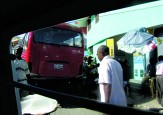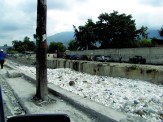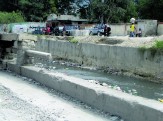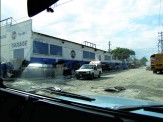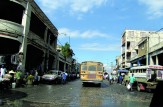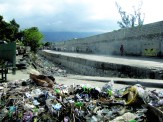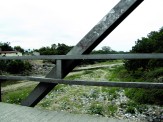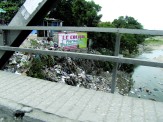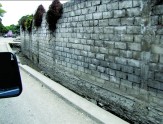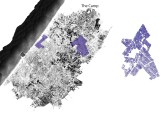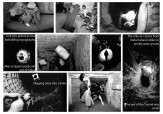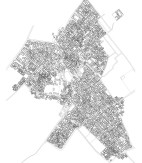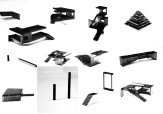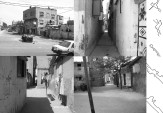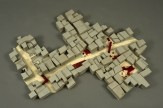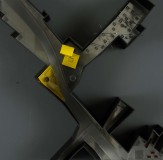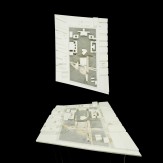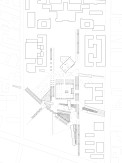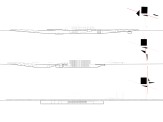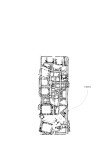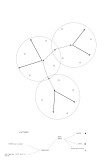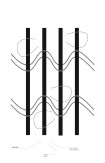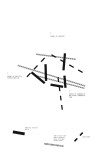2009–2010 Fellowship Recipients
Yael Hameiri | Jabalia Refugee Camp, Gaza, Palestine
Angelique J. Pierre | Port-au-Prince, Haiti
Ahmed Ali Zareh | Tehran, Iran
Projects
-
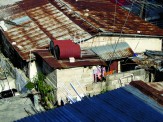
Angelique Pierre
-
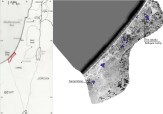
Yael Hameiri
-

Ahmed Ali Zareh
Back
Angelique Pierre
As a means of arriving at a more critical and focused view of the dense capital city of Port-au-Prince, Haiti I sought to define a tangible image of the social and spatial conditions around the infrastructural systems linking the city through water distribution, the program of the latrine, and, subsequently, that of the market.
Upon arriving in Port-au-Prince the greatest challenge was to read the internal logic of the city, as there were seemingly a number of systems operating simultaneously and without resolution. Traveling along any major route, moments of complete desertion suddenly yield to moments of dense commercial activity. In the commercial centers, various informal programs, often incompatible, flow into contiguous spaces as a means of adaptation to allow new merchants to enter the commercial sphere and compete to survive in a market where the merchant class is rampant. These abrupt transitions reveal the volatile state of the city as a result of transformations in the aftermath of civil unrest.
While conducting research at L’Universite de l’Etats d’Haiti, I came across a dissertation that explained the history and social construct of the lakou. The lakou is the term used to describe the domestic territories and safe havens of any one extended family or small community of related or adjoined houses occupies. Once I became aware of the lakou I took notice of it in a multitude of scales and realized that it articulated the principles of Haitian culture at any social class level. This space, an apparent social core, seemed to be the ideal spatial condition to implement programs at the basis of human necessity as an immediate appendage to the home. This recognized potential has become the intent of my thesis, to define a new infrastructural system that will take on the decentralized and self-sustaining qualities of the lakou while responding to the shortcomings of the existing infrastructural systems of water distribution, the latrine, and the marketplace within this typology of gathering space.
To carefully consider the shortcomings of the existing urban infrastructural systems I had to acquire firsthand accounts of the operations and failures of these systems. I was fortunate enough to have had access to valuable members of many of the key infrastructural units of the city. Among the people I interviewed was the Mayor of the city of Petionville, La Madam La Mariesse, and Lydie Parent, an unassuming but bold political figure. I also received a guided tour of the modest water system that fuels the city. Through my many conversations I was able to gather valuable information from the perspectives of the professional agencies as well as that of the citizens interacting with these infrastructural systems, both at work and at home. Each conversation left me understanding that, among all of the people I had spoken to, there was both frustration and reluctant hope for change.
Upon my return from Port-au-Prince, I was overwhelmed by all the information I had gathered and was anxiously anticipating returning to see the progress of the hopefuls I had spoken to. Unfortunately only five days after my return a 7.0 earthquake hit the city, striking and devastating the very places I had visited. It then became even more important, in real time and not simply as an architectural thesis, to consider how a new infrastructural system could be the start of new, better functioning communities in a society desperately needing critical intervention. My travels have critically re-contextualized and reshaped the thesis and have inspired and ongoing personal and hopefully professional endeavor.
Yael Hameiri
Yael’s fellowship supported her investigation of Gaza’s Jabalia Refugee Camp and tunnels. During the winter of 2009–10, she traveled to Israel where she met with numerous Israelis and Palestinians—from peace activists and journalists in Tel Aviv to UNRWA representatives in Jerusalem and aid workers in Sederot, near Israel’s southern border with Gaza. She also visited Ramallah and Jenin in the West Bank where she spoke with Fatah politicians, former inhabitants of the Jabalia Refugee Camp, and the founders of an educational theater project. These interactions provided a unique perspective on her research: not only did Yael learn about the physical and political texture of the region and its history, but she also came to understand its delicate human sensibilities. Her project attempted to find and define a metaphoric tunnel space in the camp—one that is a channel of hope, not economy.
Ahmed Ali Zareh
Ahmed’s fellowship allowed him to visit Iran where he studied the 2009 summer protests in Tehran as an architectural provocation. His project traced how flows of bodies and information profoundly altered the ways in which the city was mapped and experienced. Drawing from the language of communication technology, he used spatial complexity and porosity as the axioms for a new model of civic space, with a specific focus on Tehran University as a testing ground for urbanism that enables political diversity.

